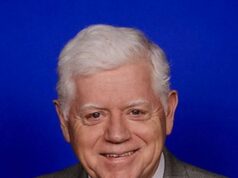GRID Alternatives begins installing solar projects on tribal lands using $1M in funding from U.S. Department of Energy
92 solar installations will serve low-income families in six communities across three states
OAKLAND, CA: September 28, 2016 – (RealEstateRama) — GRID Alternatives, America’s largest nonprofit solar installer, today announced installation has begun on 92 solar installations in six tribal communities in California, Montana, and South Dakota with over $1 million in cost-shared grants from the U.S. Department of Energy (DOE) to these individual tribes.

The grants are part of an initiative announced by DOE in March to deploy clean energy and energy efficiency projects across 24 tribal communities. These 92 solar installations build on the success of GRID Alternatives’ two-week Tribal Solarthon in 2015, which added solar power systems and workforce development to tribal communities in California, New York, Arizona, and South Dakota.
GRID Alternatives launched its national tribal program in 2014 with the long-term goal of making solar power and job training accessible to tribal communities throughout the U.S.
The first of these six projects to get underway is a collaboration with the Rosebud Sioux Tribal Utility Commission and Housing Authority in Rosebud, South Dakota. Ten low-income families on the Rosebud Reservation will receive solar electric systems expected to offset 40 percent or more of their electricity usage and save the tribe a combined $200,000 in lifetime energy costs. Students from local Sinte Gleska University are helping install the systems and gaining hands-on experience they can use to access solar jobs after they graduate.
“We are one of the poorest populations in the nation and energy issues are a part of this problem,” said Ken Haukaas, a commissioner for the Rosebud Sioux Tribal Utility Commission who helped the tribe develop its strategic energy plan. “But energy can also be part of the solution. As a tribe we must strive to be energy independent.”
The 92 solar installations total 394 kilowatts (kW) installed capacity. The other projects scheduled for later this year include:
? Bishop Paiute Tribe (Bishop, California) – The Tribe will install 120-kilowatts (kW) total solar capacity on 34 single-family low-income homes, saving homeowners about $1.29 million over the life of the systems, and moving towards the Tribe’s vision of installing solar energy systems on all Reservation buildings where technically feasible. Last year, also with a DOE cost shared grant, the Tribe and GRID installed 58 kW of solar electric systems on 22 homes.
? Chippewa Cree Tribe (Box Elder, Montana) – The Tribe will install 21 kW total solar capacity on three duplexes (six units) on the Rocky Boy’s Indian Reservation, offsetting approximately 27.3 percent of residents’ current aggregate annual electricity usage and reducing the 22.5 percent of gross income currently spent on electricity.
? San Pasqual Band of Mission Indians (Valley Center, Pauma Valley, and Santa Ysabel, California) – The Band will deploy clean energy systems for the partners of the San Diego Tribal Energy Collaborative, which include San Pasqual, La Jolla, and Mesa Grande reservations. The Collaborative will install 42 solar systems with at least 170 kW total installed capacity on 40 qualified existing low-income single-family homes and two community buildings, reducing the energy purchased by families at least 50 percent.
“Solar empowers our tribal communities to reach their clean energy goals – in some cases creating clean energy access for the first time – while expanding utility cost savings and job training,” said Tim Willink, Director of Tribal Programs for GRID Alternatives. “Our model has worked for a variety of tribal communities and these federal grants will bring solar power to even more families.”
Click here to access high-res images, credit to GRID Alternatives.
###
ABOUT GRID ALTERNATIVES
GRID Alternatives is America’s largest non-profit solar installer bringing clean energy technology and job training to low-income families and underserved communities through a network of community partners, volunteers, and philanthropic supporters. To date, GRID Alternatives has partnered with 40 Native American tribes and over 300 Native American trainees to install solar for more than 446 tribal member families, including 56 so far this year. For more information about GRID Alternatives’ work with Native American communities, visit www.gridalternatives.org/tribal















